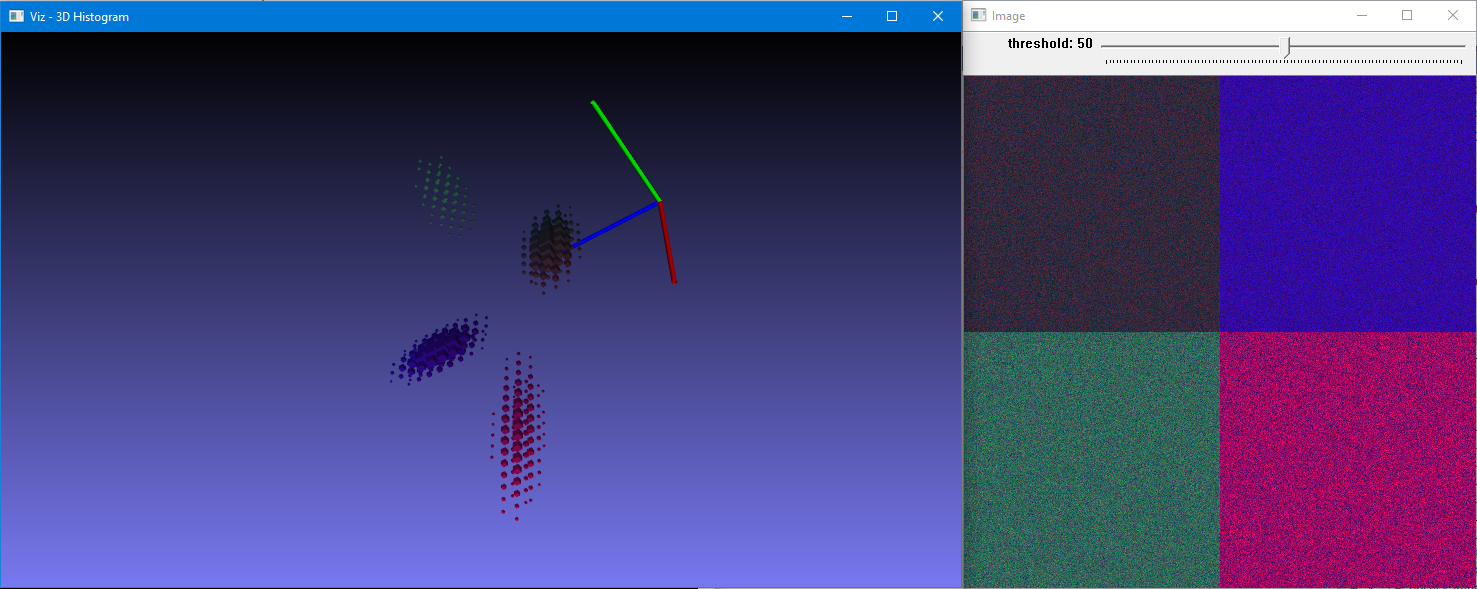 |
OpenCV
4.5.1
Open Source Computer Vision
|
 |
OpenCV
4.5.1
Open Source Computer Vision
|
Prev Tutorial: Creating Widgets
In this tutorial you will learn how to
You can download the code from here.
Here is the general structure of the program:
You can give full path to an image in command line
or without path, a synthetic image is generated with pixel values are a gaussian distribution cv::RNG::fill center(60+/-10,40+/-5,50+/-20) in first quadrant, (160+/-20,10+/-5,50+/-10) in second quadrant, (90+/-10,100+/-20,50+/-20) in third quadrant, (100+/-10,10+/-5,150+/-40) in last quadrant.
Image tridimensional histogram is calculated using opencv cv::calcHist and cv::normalize between 0 and 100.
channel are 2, 1 and 0 to synchronise color with Viz axis color in objetc cv::viz::WCoordinateSystem.
A slidebar is inserted in image window. Init slidebar value is 90, it means that only histogram cell greater than 9/100000.0 (23 pixels for an 512X512 pixels) will be display.
We are ready to open a viz window with a callback function to capture keyboard event in viz window. Using cv::viz::Viz3d::spinOnce enable keyboard event to be capture in cv::imshow window too.
The function DrawHistogram3D processes histogram Mat to display it in a Viz window. Number of plan, row and column in three dimensional Mat can be found using this code :
To get histogram value at a specific location we use cv::Mat::at(int i0,int i1, int i2) method with three arguments k, i and j where k is plane number, i row number and j column number.
Here is the result of the program with no argument and threshold equal to 50.

 1.8.13
1.8.13